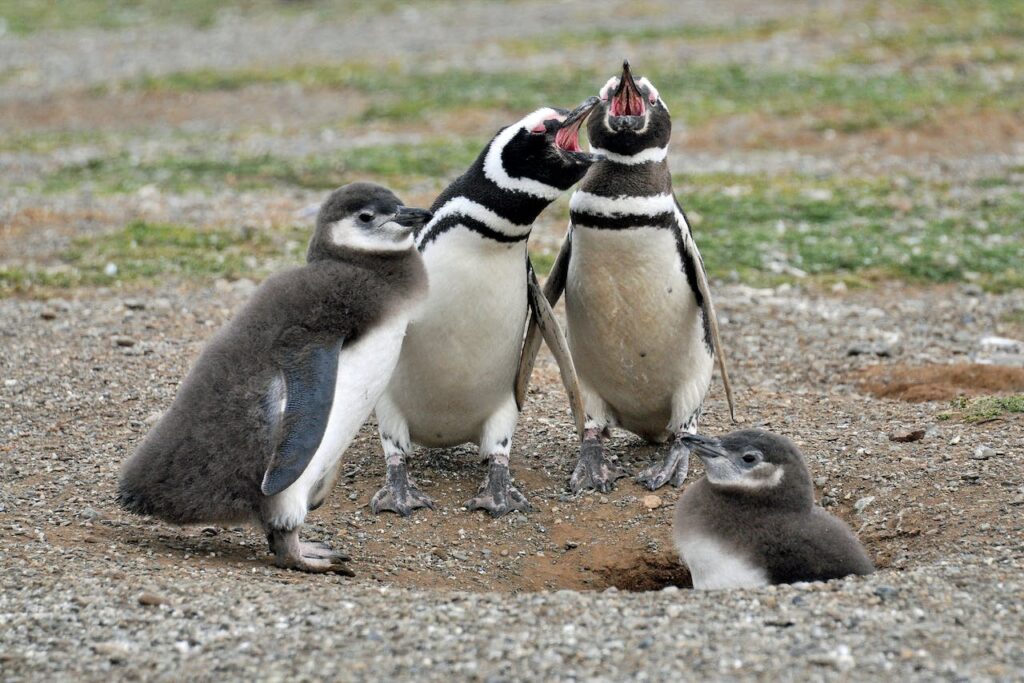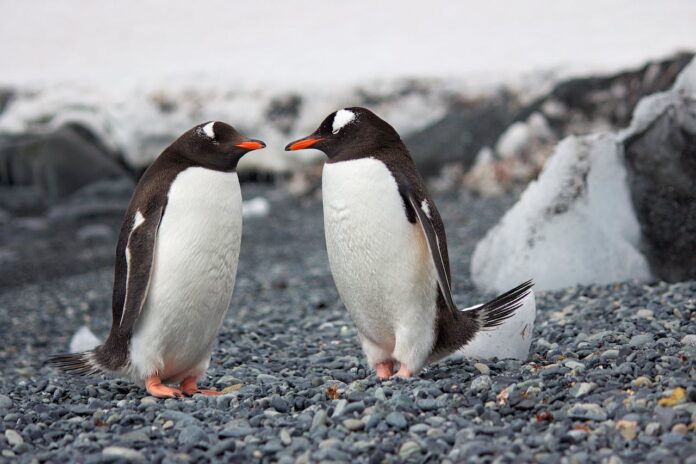In the icy realms of Antarctica and its neighboring continents, a remarkable avian phenomenon unfolds every year—the nesting habits of penguins. These charming, tuxedo-clad birds have captured the hearts of many with their endearing waddle and comical antics. Beyond their captivating exterior lies a fascinating world of intricate nesting behaviors that showcase their adaptability and resilience in the harsh polar environment. Join us on an expedition into the frosty landscapes of the southern hemisphere as we uncover the secrets of the nesting habits of penguins.
Page Contents
The Players: A Cast of Unique Characters
Before delving into their nesting habits, let’s get acquainted with the stars of our story—the penguins. There are 17 recognized species of penguins, each with its own distinct characteristics and nesting preferences. From the towering Emperor Penguins to the diminutive Little Blue Penguins, these flightless birds have evolved to thrive in diverse environments, ranging from the frigid Antarctic to the more temperate climates of South America, Africa, Australia, and New Zealand.
Read Also : A Deep Dive into the Enigmatic Life of a Koala
Location, Location, Location: Choosing the Perfect Nesting Site
The first chapter in the nesting saga of penguins is the selection of the nesting site. Penguins are meticulous when it comes to choosing the right location for their nests, which serve as both incubation chambers for their eggs and shelters for their chicks.
Emperor Penguins, for instance, showcase an extraordinary commitment to their nesting grounds. These regal birds trek for miles over the icy expanse to reach their breeding colonies. Once there, they engage in a ritualistic courtship dance, forming strong bonds with their mates. The location of their nests is critical, as Emperor Penguins build their nests on the sea ice, where they incubate their eggs during the bitter Antarctic winter.
In contrast, Adélie Penguins opt for rocky terrain, constructing nests from stones to elevate their eggs above the cold ground. Meanwhile, the aptly named Chinstrap Penguins prefer the rocky slopes of volcanic islands, where they fashion nests from pebbles, relying on the natural contours of the landscape to protect their eggs.

Material Matters: The Art of Nest Building
Once the nesting site is chosen, the next chapter unfolds—the art of nest building. Penguins may be flightless, but they are certainly not feather-brained when it comes to constructing their homes.
Adélie Penguins, for example, are master builders. With an eye for design, they collect stones to create circular nests, meticulously arranging each one to form a cozy bowl for their eggs. This not only provides insulation from the cold ground but also protects the eggs from potential predators.
On the other side of the nesting spectrum, the resourceful Gentoo Penguins embrace a more practical approach. They gather a mix of stones, feathers, and even plant material to construct their nests, often opting for a simple, shallow depression in the ground. This flexibility allows them to adapt to the varying conditions of their habitats.
The Egg-squisite Process: From Conception to Incubation
With the foundation laid, the next chapter in the nesting narrative involves the arrival of the eggs. Penguins are known for their dedication to parenting, and the incubation period is a critical phase in ensuring the survival of their offspring.
Female penguins lay one to two eggs, depending on the species, and the responsibility of incubation is shared between both parents. The duration of this process varies among species, with Emperor Penguins enduring an incredible two-month incubation period.
During this time, the nests become a hub of activity. Penguins take turns keeping the eggs warm, with one partner incubating while the other heads out to sea in search of food. This synchronized dance is crucial for the survival of the eggs, as the freezing temperatures of the polar environment pose a constant threat.
Challenges and Adaptations: Weathering the Storm
Life in the Antarctic and sub-Antarctic regions is not for the faint-hearted. Penguins face extreme weather conditions, from bone-chilling temperatures to fierce blizzards, and their nesting habits have evolved to withstand these challenges.
Emperor Penguins, for instance, endure the harshest conditions on Earth. To shield their eggs from the brutal Antarctic winter, they form huddles, with the outer layer of penguins taking the brunt of the cold while those on the inside rotate to share the warmth. This collective strategy is a testament to their resilience in the face of adversity.
Similarly, King Penguins, which inhabit sub-Antarctic islands, have adapted to the volatile weather by nesting in dense colonies. The sheer numbers provide protection against the harsh elements and potential predators, creating a united front for the survival of their chicks.
The Arrival of the Chicks: A Moment of Triumph
After weeks of anticipation and unwavering dedication, the moment arrives—the hatching of the eggs. The sight of fluffy chicks emerging from their eggs is a heartwarming spectacle, marking the beginning of a new chapter in the nesting journey.
For some species, like the regal Emperor Penguins, the chicks are hatched in the midst of winter. The father, who has diligently guarded the egg, now cradles the tiny chick on its feet, transferring it delicately between its brood pouch and feet to keep it warm.
Gentoo Penguins, with their more straightforward nesting approach, witness the emergence of chicks in spring. The parents take turns feeding and guarding the chicks, preparing them for the challenges that lie ahead.

Parenting Partnership: Raising the Next Generation
As the chicks grow, the responsibilities of the parents continue. Penguins are known for their cooperative parenting strategies, with both parents actively involved in nurturing and protecting their offspring.
Rockhopper Penguins, with their distinctive crests and lively personalities, exemplify the partnership between parents in raising their chicks. Both parents take turns foraging at sea while the other guards the nest. This tag-team effort ensures a steady supply of food for the growing chicks.
African Penguins, residing in the temperate waters of southern Africa, also share parenting duties. The chicks are raised in burrows or rock crevices, providing protection from predators. The parents take turns incubating the eggs and foraging for food, establishing a harmonious balance in their communal efforts.
Facing the Unknown: Conservation Challenges for Penguins
While the nesting habits of penguins are a testament to their resilience and adaptability, these charismatic birds face an uncertain future. Climate change, overfishing, and habitat destruction pose significant threats to penguin populations worldwide.
Emperor Penguins, in particular, are vulnerable to the melting sea ice, which affects their ability to breed and hunt. The decline of fish populations due to overfishing also impacts the food supply for many penguin species, putting additional pressure on their survival.
Conservation efforts are crucial to safeguarding these beloved birds and their nesting habitats. Initiatives focused on habitat protection, sustainable fishing practices, and global climate action play a vital role in ensuring the continued existence of penguins and the unique ecosystems they inhabit.
Read Also : Mastering the Skies: A Dive into the Hunting Techniques of Eagles
Conclusion: A Story of Resilience and Hope
In the frozen landscapes of the southern hemisphere, the nesting habits of penguins unfold as a captivating tale of resilience, adaptation, and parental dedication. From the rocky shores of sub-Antarctic islands to the icy expanses of Antarctica, these charming birds navigate the challenges of their environments with remarkable skill.
As we marvel at the intricacies of their nesting behaviors, let us also reflect on the responsibility we bear in preserving their habitats and securing a future where penguins can continue to waddle, nest, and thrive. The story of penguins is not just a tale of survival; it is a call to action, urging us to be stewards of the icy realms they call home.


